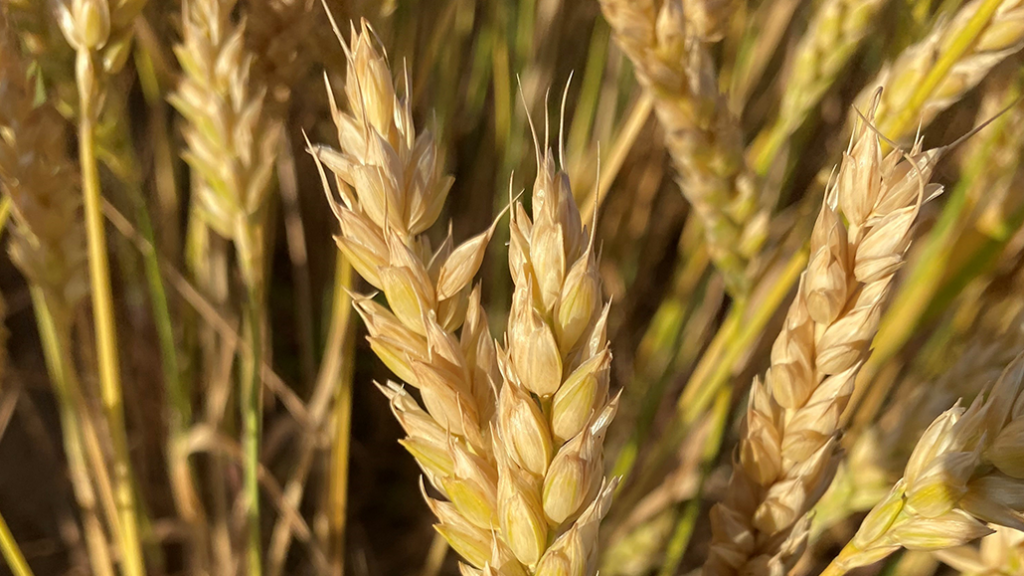The year of extremes
A LOOK BACK AT 2022

THE 2022 GROWING season was one for the record books. Overall, spectacular winter wheat yields were seen province-wide. However, a significant drought in some areas greatly impacted corn and soybean yields.
It has been a challenging year in more ways than one — drought in one area, extreme moisture in another, high fertilizer prices, fuel prices, labour costs, parts, the list could go on. And, as many who make farming their profession know, the year is not over until the crop is in the bin and the tractor is in the shed.
SPRING
A wet fall season that delayed fieldwork led into a spring that started out cool and wet. However, ground was able to be worked in the spring to remedy fall errors, and by mid-May, it was full steam ahead for corn and soybean planting, allowing many acres to be planted in almost ideal conditions. A lot of winter wheat went into the ground in less-than-ideal conditions or much later than recommended, making for a tough start for the crop. Over the winter, there were concerns that a lot of acres might be terminated in the spring, but March was kinder than expected.
The end of May saw heavy rains and strong winds as a derecho moved across the province. A saving grace was that corn plants were just emerging and not at the end of the season when massive crop destruction has occurred in other regions of the continent. With heavy rains, planting began to drag into June, and later planted crops went into tougher planting conditions. There was a significant staging difference between the early and later planted crops; some corn was at V2 to V4, whereas other fields were just emerging. The same could be said for soybeans, with some beans just emerging after planting while others were at the first to second trifoliate as spring progressed.
Northern Ontario went from a drought in 2021 to incredible amounts of excess moisture hindering planting. Spring seeding dates were extended, and farmers planted crops however they could.
Insect pressures were present with cutworm and wireworm affecting stands. Bean leaf beetle pressure was seen particularly on early emerging stands, serving as a good reminder to rotate crops, as many showed up in second-year soybeans.
SUMMER
There was very little moisture to spare as the summer season arrived, with an early season drought. Many areas saw little to no rain for roughly five weeks or more. Heavily affected areas were those with little water-holding capacity, like sand, clay, and shallow soils.
Overall, there were many uneven crops and high variability across the province due to many areas missing crucial rain showers.
Corn pollination occurred during hot, dry conditions. Areas already struggling with limited moisture had poor pollination and poor kernel development, with plants aborting kernels early, resulting in smaller cobs.
With little moisture, insect pressure continued. Two-spotted spider mites were common in areas and found at high levels. Soybean aphids also appeared in the province; in eastern Ontario, there were very high populations.
Winter wheat harvest went off without a hitch, as dry weather allowed for good quality wheat at harvest. Many were lucky that the grain fill period did see some relief from hot temperatures, and there was moisture in the ground leading to exceptional yields, with many reporting the highest yields ever seen.
After harvest, a gamble was taken on many acres, and cover crops were planted with hopes that some moisture would germinate the seed. It paid off, with many fields having spectacular-looking cover crops by the fall.
Oat and barley yields were average across much of the province. Northern Ontario, with later planted fields, saw harvest stretch out, late summer/fall rains slowed harvest, and some fields were still being combined as fall arrived.
FALL
One clear bonus of low moisture meant less disease was found in the fields as the year progressed. As fall approached, there was very little concern about white mould in soybeans. Gibberella ear rot and other corn diseases, such as Northern corn leaf blight and tar spot, were found but never were a huge concern.
Both Gibberella and tar spot are two diseases of concern for the province. Gibberella ear rot can produce the toxin DON, causing feeding issues to humans and livestock. Ideal conditions for development are 27 to 28 °C, with humid, rainy days during pollination. Tar spot was identified in the province in mid-July, similar to last year. However, with the lack of moisture this year and the environment not conducive to its spread, it remained at low levels. Tar spot can develop when temperatures are between 15 and 21 °C and high relative humidity for seven or more hours. Saturated soils and leaf wetness can also contribute to the spread. Both diseases will need to be monitored and managed in the coming years — the environment determines a lot, and traditionally, eastern Canada experiences high heat and high humidity that can cause disease to flourish.
Following the soybean harvest, many growers reported average to well below-average yields. Eastern Ontario ended up with more moisture than much of the western portion of the province and produced decent yields.
Corn harvest will be similar, showcasing the tale of drought and how drastically moisture can impact pollination and yield.
GOING FORWARD
Every area had its own story to tell this year. It is important to realize what attributed to yield (high or low); was it management or weather? If it was management, consider what could be done better, what risks can be mitigated, and what worked well and should be replicated next year.
If fields have a history of disease and insect pressure — manage it! Choose varieties/ hybrids that are good at handling the disease and insect pressure and plan out the management decisions that will help optimize yield well before heading to the field. Of course, there are always changes, but a solid plan from the start helps if it becomes chaotic in the growing season.
For weeds, remember to rotate modes of action. A two-pass glyphosate program will not last for years to come. Be aware of resistant weeds in fields, and be sure to take steps to control them. Look at alternative controls, such as cover crops, to help manage weeds. Control of perennial weeds in the fall takes some of the pressure off in the spring. Be sure to manage off-target movement; it is critical when using volatile products such as dicamba on green canopies. Take preventative measures to know what crops are surrounding fields and make sure nozzle selection, pressure, water volume, etc., will make sure the product gets to its target.
Overall, think of the “what-ifs” and plan for them.
Laura Ferrier is an agronomist for Grain Farmers of Ontario. •

























